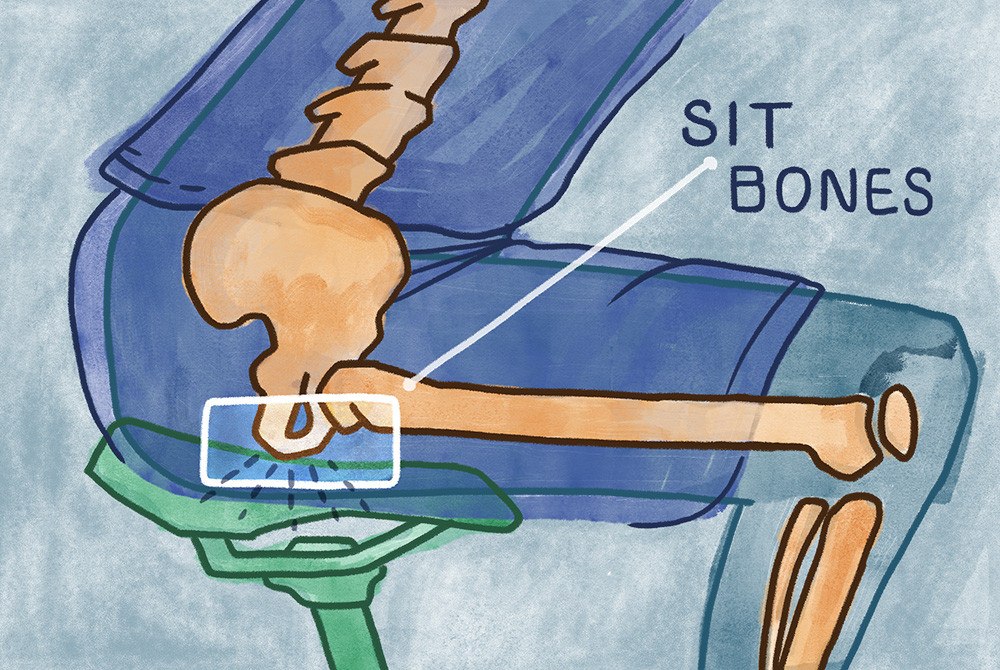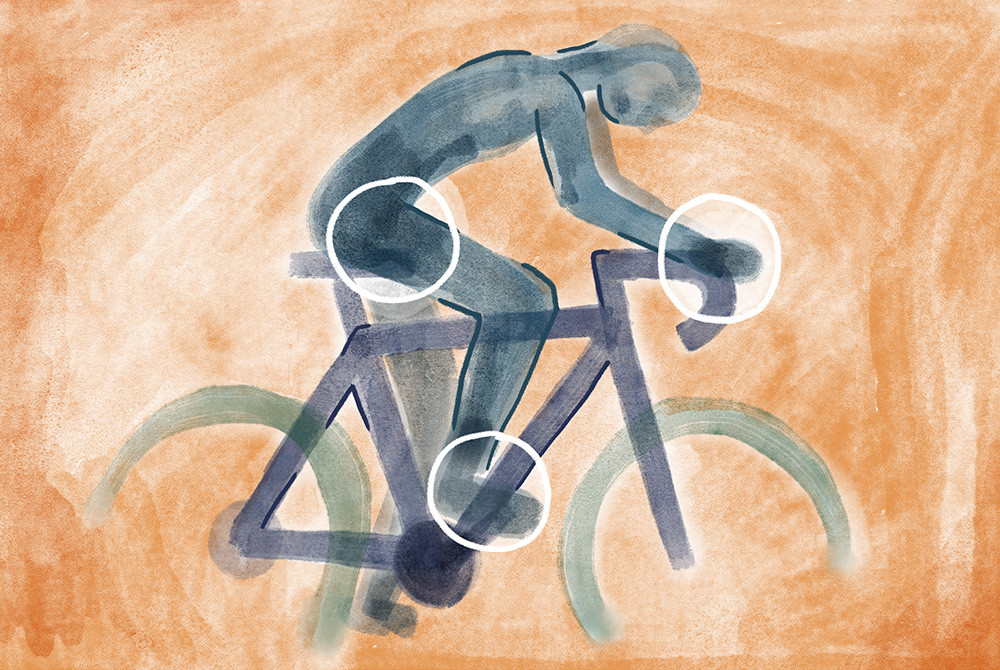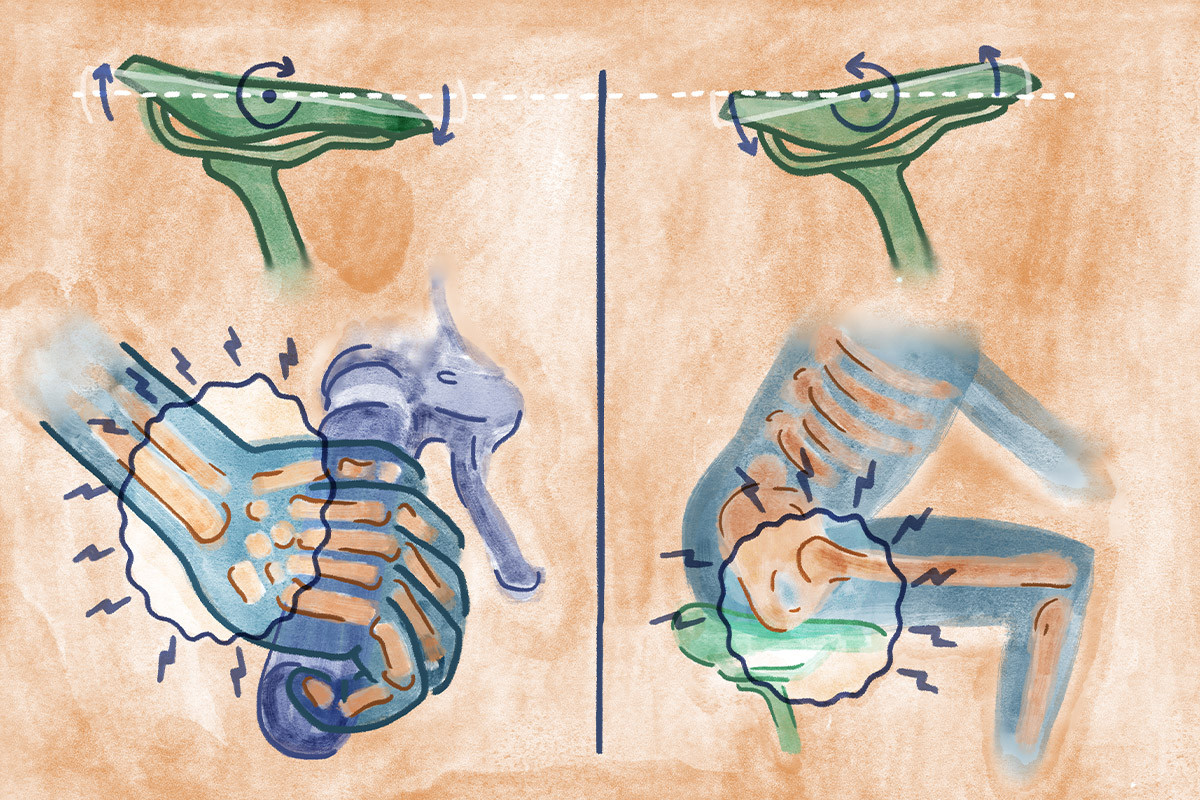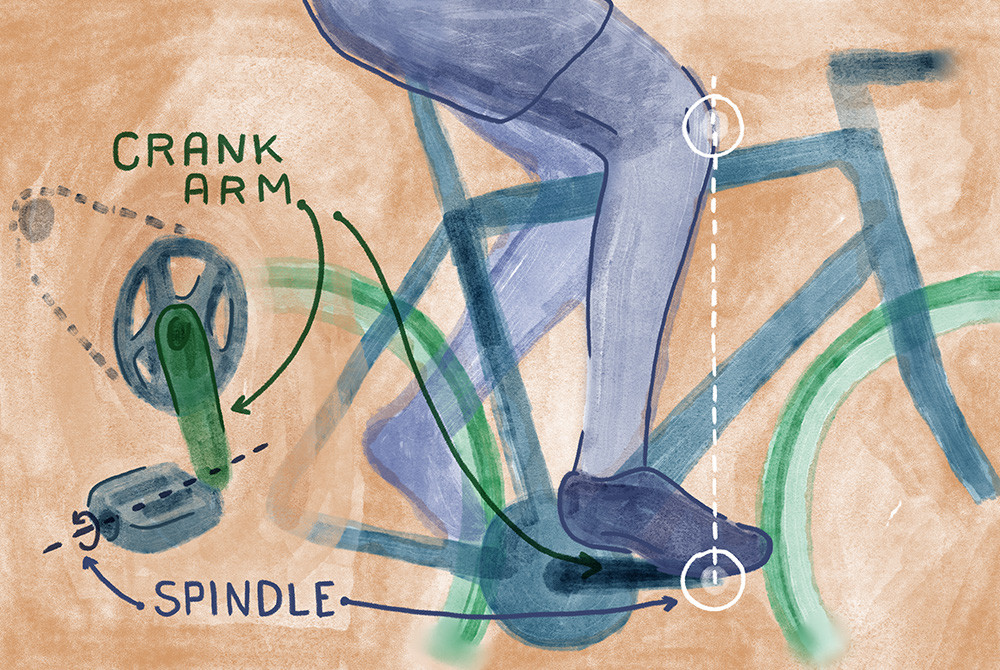For too long, many women cyclists have accepted saddle discomfort as just part of the ride. Whether you’re commuting, touring, or hitting the trails, pain in your sensitive areas shouldn’t be the norm. If you’re experiencing persistent discomfort, numbness, or pain while cycling, the good news is that it’s often solvable. Understanding Bike Seats For Females and how to optimize your setup can revolutionize your cycling experience.
When cycling, your weight should be primarily supported by your sit bones – the bony protrusions at the base of your pelvis. However, standard bike saddles, often designed with male anatomy in mind, can place excessive pressure on the vulva and surrounding soft tissues for women. This pressure leads to pain, swelling, and numbness, making cycling an unpleasant experience. The key to comfort lies in choosing the right bike seat and adjusting it correctly.
 Illustration explaining sit bones in relation to a bicycle saddle.
Illustration explaining sit bones in relation to a bicycle saddle.
Why Bike Seats Designed for Females Matter
Women generally have wider sit bones than men, a key anatomical difference that necessitates different saddle designs. Bike seats for females are specifically engineered to accommodate this wider pelvic structure, providing better support and pressure distribution. These saddles often feature:
- Wider Rear Sections: To properly support the sit bones.
- Cutouts or Channels: To relieve pressure on the perineum and vulva.
- Shorter Nose Lengths: To reduce friction and chafing.
- Varied Padding: Strategically placed to offer cushioning where needed without being overly bulky.
Choosing a bike seat designed for females is the first crucial step in ensuring a comfortable ride. However, even the best saddle needs to be adjusted correctly to work effectively.
 An illustration showing the three main contact points on a bicycle.
An illustration showing the three main contact points on a bicycle.
Fine-Tuning Your Comfort: Bike Seat Adjustments for Females
Beyond saddle selection, adjusting your current bike seat can make a significant difference in comfort. The three primary adjustments are height, tilt, and fore/aft position.
1. Saddle Height: Balancing Your Weight
Saddle height plays a crucial role in distributing your weight across your three contact points: feet, hands, and sit bones. An incorrect saddle height, whether too high or too low, shifts weight disproportionately, often leading to increased pressure on your sensitive areas.
Finding the Right Height: Ideally, you should have a slight bend in your knee when your pedal is at its lowest point. Adjust the saddle height in small increments until you feel balanced and can pedal efficiently without rocking your hips or feeling excessive pressure on your bike seat.
2. Saddle Tilt: Achieving a Neutral Position
Saddle tilt refers to the angle of your seat, whether the nose points upwards or downwards. A neutral position is generally recommended, where the saddle is roughly parallel to the ground.
Adjusting Tilt for Comfort:
- Nose Too High: Can dig into soft tissues, causing significant discomfort.
- Nose Too Low: Can cause you to slide forward, placing pressure on your hands and wrists, and potentially shifting weight uncomfortably onto the narrower front of the saddle.
Start with a level saddle and make small adjustments to find your personal sweet spot.
 Illustrates the effect of tilting a bike saddle too far up or down.
Illustrates the effect of tilting a bike saddle too far up or down.
3. Fore/Aft Position: Knee Alignment and Weight Distribution
The fore/aft position of your saddle refers to how far forward or backward it is positioned on the seatpost. This adjustment impacts your knee alignment and overall weight distribution.
Finding the Ideal Fore/Aft: A common guideline is to position your saddle so that when your crank arm is horizontal to the ground, your kneecap is directly above the pedal spindle. While precise measurements can be helpful, focusing on how your weight feels distributed is key.
Start in the Middle: If you’re unsure, begin with the saddle in a central position and make minor adjustments forward or backward to find a balanced and comfortable riding position.
 Illustrates a tip for setting the fore/aft position of your bicycle saddle.
Illustrates a tip for setting the fore/aft position of your bicycle saddle.
The Bigger Picture: Bike Fit and Female Comfort
While optimizing your bike seat is crucial, remember that it’s part of a larger system – your bike fit. If you’ve adjusted your saddle and still experience discomfort, consider other aspects of your bike fit.
Frame Size and Handlebar Height: A bike frame that’s too large or too small, or handlebars positioned too low or too high, can affect your reach and posture, impacting saddle pressure. If you suspect bike fit issues, seeking advice from a bike shop or a professional bike fitter can be beneficial.
Choosing the Right Bike Seat for You: A Personal Journey
Ultimately, selecting the best bike seat for females is a personal process. What works perfectly for one woman might be uncomfortable for another. Factors like riding style, frequency, and personal anatomy all play a role.
Trying Before Buying: Many bike shops offer test saddles, allowing you to try different models before committing to a purchase. This is the best way to determine what truly feels comfortable for you.
Consider Saddle Width: Measure your sit bone width (many bike shops can assist with this) to ensure you choose a saddle of appropriate width. Wider sit bones generally require wider saddles.
Don’t Be Afraid to Experiment: It might take trying a few different bike seats to find the perfect match. Be patient and persistent in your search for comfort.
Back in the Saddle: Enjoying Pain-Free Cycling
Saddle pain doesn’t have to be a barrier to enjoying cycling. By understanding the importance of bike seats designed for females, making thoughtful adjustments, and being willing to experiment with different saddles, you can achieve a comfortable and enjoyable ride. Listen to your body, prioritize your comfort, and get ready to experience the joy of cycling without pain.
Troubleshooting Crotch Pain While Riding: Quick Steps
- Adjust your current saddle: Fine-tune height, tilt, and fore/aft position.
- Assess your overall bike fit: Consider frame size and handlebar position.
- Explore new bike seats for females: Try different widths, shapes, and padding levels.
